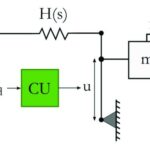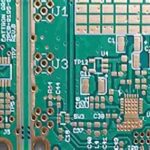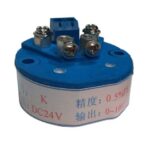Introduction to Multilayer PCB Manufacturing
Printed Circuit Boards (PCBs) are the backbone of modern electronics. They provide a platform for interconnecting electronic components and enable the functioning of complex electronic systems. As technology advances, the demand for more complex and compact PCBs has increased, leading to the development of Multilayer PCBs.
Multilayer PCBs are PCBs that consist of three or more conductive copper layers laminated together with insulating material between each layer. This allows for higher component density, improved signal integrity, and better power distribution compared to single or double-layer PCBs. Multilayer PCBs are used in a wide range of applications, from consumer electronics to aerospace and defense systems.
Benefits of Multilayer PCBs
- Increased Circuit Density: Multilayer PCBs allow for more components to be placed on a single board, reducing the overall size of the electronic device.
- Improved Signal Integrity: The use of dedicated signal layers and proper grounding techniques in multilayer PCBs reduces crosstalk and electromagnetic interference (EMI), resulting in cleaner signals.
- Better Power Distribution: The incorporation of power and ground planes in multilayer PCBs provides a low-impedance path for power distribution, minimizing voltage drops and ensuring stable power delivery to components.
- Enhanced Thermal Management: The presence of multiple copper layers in multilayer PCBs helps dissipate heat more efficiently, preventing components from overheating and improving overall reliability.
- Cost-Effective: Although the initial cost of multilayer PCBs may be higher than single or double-layer PCBs, they often result in cost savings by reducing the number of boards required and simplifying the assembly process.
The Multilayer PCB Manufacturing Process
The manufacturing process for multilayer PCBs involves several steps, each of which requires precision and attention to detail. Here’s an overview of the key stages in multilayer PCB manufacturing:
1. Design and Layout
The first step in multilayer PCB manufacturing is designing the circuit and creating the PCB layout. This involves determining the number of layers required, the placement of components, and the routing of traces. PCB Design Software, such as Altium Designer or OrCAD, is used to create the schematic and layout files.
2. Material Selection
The choice of materials for multilayer PCBs is crucial as it affects the board’s performance, reliability, and cost. The most common base material used is FR-4, a fire-resistant glass-reinforced epoxy laminate. Other materials, such as polyimide or high-frequency laminates, may be used for specific applications.
3. Inner Layer Fabrication
The inner layers of a multilayer PCB are fabricated individually. The process starts with a copper-clad laminate, which is cleaned and then coated with a photoresist. The photoresist is exposed to UV light through a photomask, which contains the desired circuit pattern. The exposed areas of the photoresist are then developed and removed, leaving the copper exposed.
4. Etching and Inspection
The exposed copper is etched away using a chemical solution, typically ammonium persulfate or cupric chloride. This leaves the desired circuit pattern on the inner layer. The etched layers are then inspected for defects using automated optical inspection (AOI) systems.
5. Lamination
The inner layers are stacked together with insulating prepreg material between each layer. Copper foil is placed on the top and bottom of the stack to form the outer layers. The stack is then placed in a lamination press, where heat and pressure are applied to bond the layers together.
6. Drilling
After lamination, holes are drilled through the board to allow for the mounting of components and the creation of vias, which connect different layers of the PCB. The drilling process is typically done using computer numerical control (CNC) machines.
7. Plating
The drilled holes are then plated with copper to create electrical connections between layers. This is done through a process called electroless copper plating, followed by electrolytic copper plating to increase the thickness of the copper.
8. Outer Layer Processing
The outer layers of the PCB undergo a similar process to the inner layers, including the application of photoresist, exposure, development, and etching. Additional steps, such as solder mask application and silkscreen printing, are also performed on the outer layers.
9. Surface Finishing
To protect the exposed copper and improve solderability, a surface finish is applied to the PCB. Common surface finishes include Hot Air Solder Leveling (HASL), Immersion Silver, Immersion Tin, and Electroless Nickel Immersion Gold (ENIG).
10. Electrical Testing
The completed multilayer PCB undergoes electrical testing to ensure that all connections are correct and that the board functions as intended. This includes continuity testing, insulation resistance testing, and high-voltage testing.
Challenges in Multilayer PCB Manufacturing
While multilayer PCBs offer numerous benefits, their manufacturing process also presents several challenges:
- Layer Alignment: Ensuring proper alignment between layers is crucial for the correct functioning of the PCB. Misalignment can lead to poor connections and signal integrity issues.
- Thermal Management: As the number of layers increases, the ability to dissipate heat becomes more challenging. Proper thermal management strategies, such as the use of thermal vias and heat sinks, must be implemented.
- Signal Integrity: Maintaining signal integrity becomes more difficult as the number of layers and the density of components increase. Careful design and layout techniques, such as proper grounding and the use of controlled impedance traces, are necessary to minimize signal degradation.
- Manufacturability: The complexity of multilayer PCBs can make them more difficult to manufacture. Designers must consider factors such as minimum trace widths, hole sizes, and layer counts to ensure that the board can be reliably produced.
- Cost: The cost of manufacturing multilayer PCBs increases with the number of layers and the complexity of the design. Balancing performance requirements with cost constraints is an ongoing challenge in multilayer PCB manufacturing.

One-Stop Multilayer PCB Manufacturing Solutions
To address the challenges associated with multilayer PCB manufacturing, many companies offer one-stop solutions that encompass the entire manufacturing process. These solutions provide several advantages:
- Streamlined Process: One-stop solutions simplify the manufacturing process by eliminating the need to coordinate with multiple suppliers. This reduces lead times and minimizes the risk of communication errors.
- Consistent Quality: By having a single provider handle all aspects of manufacturing, it is easier to maintain consistent quality throughout the process. This is particularly important for complex multilayer PCBs.
- Design Support: One-stop solutions often include design support services, which can help optimize the PCB layout for manufacturability and performance. This can lead to cost savings and improved reliability.
- Flexibility: One-stop providers typically offer a range of manufacturing options, from prototyping to high-volume production. This flexibility allows companies to scale their PCB manufacturing as needed.
- Cost Savings: By consolidating the manufacturing process with a single provider, companies can often achieve cost savings through reduced logistics costs and volume discounts.
Applications of Multilayer PCBs
Multilayer PCBs are used in a wide variety of applications across different industries. Some common applications include:
- Consumer Electronics: Smartphones, laptops, and wearable devices rely on multilayer PCBs to achieve high component density and performance in compact form factors.
- Automotive Electronics: Modern vehicles incorporate numerous electronic systems, such as infotainment, advanced driver assistance systems (ADAS), and engine control units (ECUs). Multilayer PCBs are essential for these systems due to their reliability and ability to withstand harsh environmental conditions.
- Medical Devices: Medical equipment, such as patient monitors, imaging systems, and implantable devices, requires high-reliability multilayer PCBs to ensure patient safety and accurate functioning.
- Aerospace and Defense: Avionics systems, radar equipment, and military communications devices demand the use of multilayer PCBs that can operate in extreme temperatures and withstand high levels of vibration and shock.
- Industrial Automation: Factory automation systems, process control equipment, and robotics rely on multilayer PCBs for their complex circuitry and high-speed communication requirements.
Future Trends in Multilayer PCB Manufacturing
As technology continues to advance, the demand for more sophisticated multilayer PCBs will continue to grow. Some of the future trends in multilayer PCB manufacturing include:
- Higher Layer Counts: The need for even greater circuit density will drive the development of PCBs with higher layer counts, potentially reaching 100 layers or more.
- Advanced Materials: The use of advanced materials, such as low-loss dielectrics and high-temperature laminates, will become more common to meet the demands of high-frequency and harsh-environment applications.
- Embedded Components: The integration of passive components, such as resistors and capacitors, directly into the PCB substrate will help further reduce the size and improve the performance of electronic devices.
- 3D Printing: Additive manufacturing techniques, such as 3D printing, may be used to create multilayer PCBs with complex geometries and unique features that are difficult to achieve with traditional manufacturing methods.
- Artificial Intelligence (AI) and Machine Learning (ML): The application of AI and ML in PCB design and manufacturing will help optimize layouts, predict potential issues, and improve overall efficiency.
FAQs
1. What is the maximum number of layers that can be achieved in a multilayer PCB?
Currently, the practical limit for the number of layers in a multilayer PCB is around 64. However, some specialized applications may require even higher layer counts, and PCBs with up to 100 layers have been produced.
2. How does the cost of a multilayer PCB compare to a single or double-layer PCB?
The cost of a multilayer PCB is generally higher than that of a single or double-layer PCB due to the increased complexity of the manufacturing process and the materials required. However, the cost per layer tends to decrease as the number of layers increases.
3. What are the most common materials used in multilayer PCB manufacturing?
The most common base material used in multilayer PCB manufacturing is FR-4, a glass-reinforced epoxy laminate. Other materials, such as polyimide, PTFE, and high-frequency laminates, may be used for specific applications that require higher performance or resistance to extreme conditions.
4. How long does it typically take to manufacture a multilayer PCB?
The lead time for manufacturing a multilayer PCB depends on several factors, including the complexity of the design, the number of layers, and the chosen manufacturing options. Prototype quantities can usually be produced within a few days to a couple of weeks, while high-volume production may take several weeks to a few months.
5. What are the key considerations when designing a multilayer PCB?
When designing a multilayer PCB, some key considerations include:
- Determining the appropriate number of layers based on the circuit complexity and space constraints
- Ensuring proper layer stackup and materials selection for optimal signal integrity and thermal management
- Adhering to design rules and guidelines for manufacturability, such as minimum trace widths, spacing, and hole sizes
- Implementing appropriate grounding and power distribution strategies
- Conducting thorough design reviews and simulations to identify and resolve potential issues before manufacturing
Conclusion
Multilayer PCB manufacturing has revolutionized the electronics industry by enabling the creation of complex, high-density circuits in compact form factors. The process involves numerous steps, each requiring precision and expertise to ensure the reliable functioning of the final product.
One-stop multilayer PCB manufacturing solutions offer a streamlined approach to addressing the challenges associated with producing these intricate boards. By providing a range of services, from design support to final testing, these providers help companies achieve consistent quality, cost savings, and faster time-to-market.
As technology continues to advance, the demand for multilayer PCBs with higher layer counts, advanced materials, and innovative features will only grow. Staying at the forefront of these developments will be crucial for manufacturers to meet the ever-evolving needs of industries such as consumer electronics, automotive, medical, aerospace, and industrial automation.
By understanding the intricacies of multilayer PCB manufacturing and partnering with experienced one-stop solution providers, companies can unlock the full potential of this technology and drive innovation in their respective fields.









